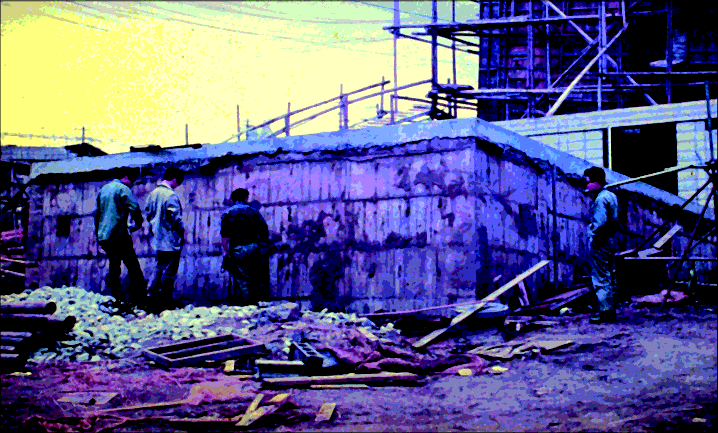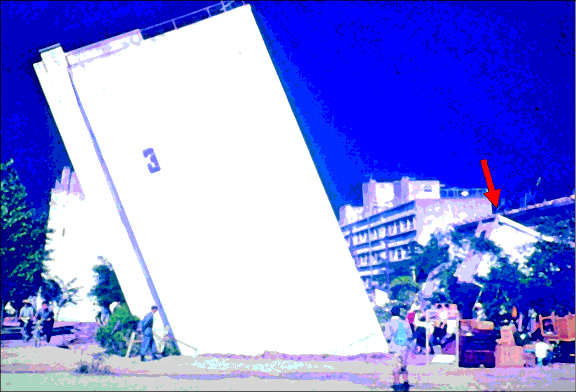1

Figure 101: Floating Tank. During a 1964 earthquake in Niigata (NEE-gat-ah), Japan, the ground turned to a dense liquidlike substance, causing this empty concrete tank to float up from just below ground level. This was the first time geologists identified the phenomenon of liquefaction, which had undoubtedly occurred in other large earthquakes. Liquefaction has even lifted empty tanks up through asphalt pavement1 and raised pipelines and logs out of the ground.2 In other words, buried objects less dense than surrounding soil rise buoyantly when that soil liquefies. What causes liquefaction? What would happen to buried animals and plants in temporarily liquefied sediments?

Figure 102: Sinking Buildings. During the above earthquake, building number 3 sank and tipped 22 degrees as the ground partially liquefied. Another building, seen at the red arrow, tipped almost 70 degrees, making its roof nearly vertical.